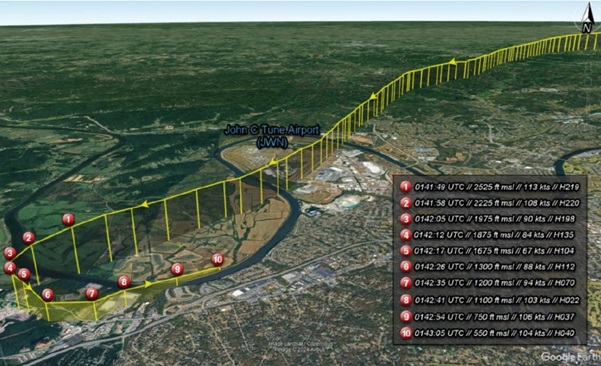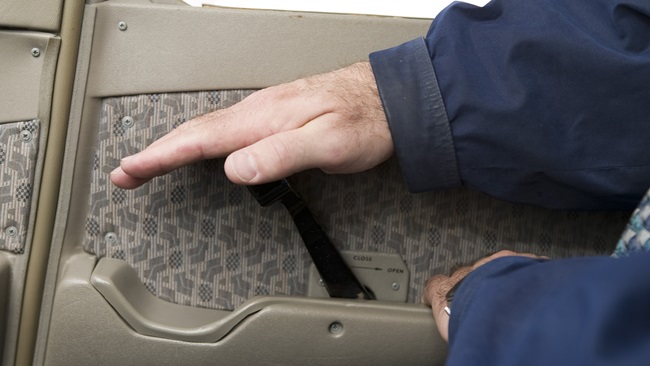Force of habit
Extensive experience is usually helpful
Piloting experience is generally viewed as a good thing, but like everything else in aviation, it comes with certain gotchas. One occurs when habits developed in one model of aircraft are carried over to another where they’re not appropriate.
A Piper Arrow should have the electric fuel pump on during takeoff and landing, but do that in an A36 Bonanza and you’ll flood the engine. The likelihood of reverting to well-worn habits is particularly high when reacting to abnormalities or emergency situations … and the consequences can be particularly severe when the transfer takes place in a different category of aircraft governed by different aerodynamic principles.
Late in the afternoon of Oct. 6, 2016, a Fairchild-Hiller FH-1100 helicopter broke up in flight near Lino Lakes, Minnesota, killing the pilot and only passenger. The Anoka County Sheriff’s Department interviewed five witnesses, all of whom reported hearing a “clunking” or “popping” noise before parts began to fly off the helicopter, which crashed nose-first and caught fire. Two specifically mentioned seeing it swinging from side to side as this sequence began. One compared it to a rocking boat. The main rotor blades, still attached to the hub, were found in a pond 500 feet from the fuselage.
The 48-year-old pilot held an airline transport pilot certificate for multiengine airplane with type ratings in five transport-category jets and commercial privileges for single-engine airplane, single-engine seaplane, and rotorcraft helicopter. He was a full-time airline captain whose most recent medical application, filed two months before the accident, listed 15,000 hours of career experience with 400 hours in the preceding six months. He had added the helicopter rating relatively recently, passing his add-on commercial checkride 13 months earlier in the FH-1100. His instructor said that he initially had some of the difficulties typical of high-time fixed-wing pilots transitioning to helicopters, but he must have been a good student: His logbook showed just 55.5 hours of helicopter time, close to the minimum experience required for a commercial helicopter rating under Part 61. However, as of the morning of the accident, he hadn’t flown a helicopter in almost a year.
The NTSB Materials Laboratory’s examination of the rotor mast found “deformation and fractures on slant angles consistent with an overstress fracture under bending and torsion loads. Deformation to the mast associated with impact marks adjacent to the fracture were consistent with mast bumping. No evidence of preexisting cracks or corrosion was observed.”
Mast bumping is a hazard specific to helicopters in low-G conditions, which can be caused either by turbulence or an abrupt forward push on the cyclic. With the weight of the fuselage no longer supported by the main rotor system, thrust from the tail rotor (which is located above the center of gravity) causes a sudden uncommanded roll. The correct response is to use gentle aft cyclic to reload the main rotor before attempting to counter the roll. If the pilot instead reacts by using lateral cyclic opposing the roll, the unloaded rotor and fuselage move toward one another until the rotor hub strikes the mast. Typically this causes a series of increasingly sharp rebounds to either side that become hard enough to break the mast, separating the main rotor from the aircraft.
The reason the FH-1100’s rotor became unloaded could not be determined. The reported weather—six-knot winds under a 6,000-foot overcast layer—did not seem conducive to turbulence, though in the absence of observations at the accident site, it can’t be entirely ruled out. It also seems unlikely its pilot would have deliberately put the aircraft into what he knew was a hazardous situation; according to his instructor, he’d “responded correctly” to questions about mast bumping during training. However, in its Safety Notice No. 29, the Robinson Helicopter Co. points out that in some urgent situations, a high-time airplane pilot’s instinct to lower the nose may result in a forward push before the conscious mind has time to intervene. One is the sound of a warning horn, which the airplane pilot might hear as a stall rather than an indication of low rotor RPM. Another is an imminent collision with a bird or other airborne conflict. In both cases the correct response is to rapidly lower the collective, but a fixed-wing pilot’s ingrained reaction will be to push the stick forward.
The morning of the accident, the pilot had taken two flights with a friend, a more experienced helicopter pilot, to make sure his skills were up to the task. Both flights passed uneventfully; the friend later told investigators that “I was basically just along for the ride.” While those demonstrated his competence handling the helicopter under normal conditions, that year of inactivity could not have improved his ability to process an in-flight anomaly.



